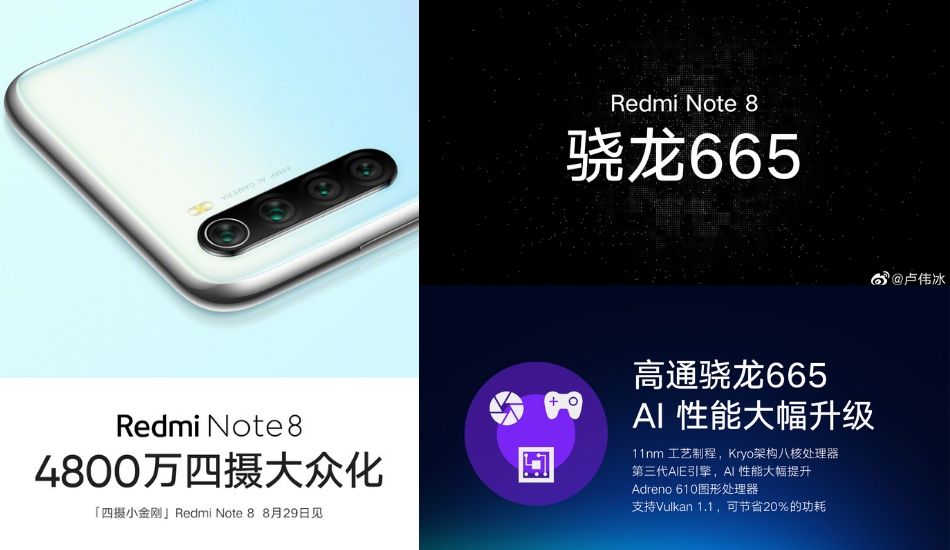Xiaomi has recently introduced its latest mid-budget smartphone, the Redmi Note 8 in India. The smartphone comes with a price tag of Rs 9,999 for 4GB RAM + 64GB storage option and Rs 12,999 for 6GB RAM + 128GB of internal storage.
Xiaomi has loaded with a 48-megapixel rear camera and it is the first device in Redmi Note series that features a quad-camera setup. The company has equipped this smartphone with top-of-the-line camera hardware. However, does it take good photos? Are the cameras of the Redmi Note 8 exceptional or not? Let’s try and answer questions like these in this camera review.
[[VIDEOID=1536]]
Redmi Note 8 Camera specifications
Before we start with the camera review, let’s refresh the camera specifications of the Redmi Note 8. The smartphone is loaded with a quad-camera setup with a 48-megapixel as the primary camera with f/1.79 aperture, Samsung ISOCELL GM2 sensor, PDAF, EIS, an 8-megapixels 120 degree super Wide-Angle lens with 1.12 μm, a 2-megapixel Macro lens with 1.75μm pixel size, f/2.4 Aperture and a 2-megapixels depth sensor. On the front, it has a 13-megapixel selfie shooter that supports AI beauty with f/2.0 aperture. So, let’s start with the camera review of the Redmi Note 8.
Rear Camera: Daylight
Normal

The photo of the building came out to be really good. The colour reproduction was to the point and detailing was good as well. The colour of the sky was close to the source and the phone was able to deliver a good dynamic range in this photo.

In this second image, the phone captures good colours. The colour of grass is close to the source and so is the colour of the plants in the foreground and background. The colour of the building looks natural, though we noticed that it overexposed the sky in the background.
Telephoto

The phone once again does a good job in capturing photos using the telephoto mode. The colours were close to the source and one can see the blanket hanging on the top floor, which is a good thing. The colour of the sky is once again close to the source.

In this photo, we notice a slight shift in colours. The colour of the grass is not the same as we have seen in the normal mode and it is over saturating the plant’s colours in the background as well. Furthermore, the phone can maintain the same amount of details in the telephoto as well.
Wide Angle

In this image, we noticed that it came out to be a bit dark. The colours of the grass look dull as compared to the normal mode and you can see a slight barrel distortion issue around the edges. Furthermore, the sky is overexposed and it is also hindering the top-part of the building in the background.
48MP

Photos clicked using 48MP camera mode gives you a similar result as clicked the normal mode. There is no change in the colour reproduction of the image, however, when you zoom in to the photo, you will see slightly better detailing. But apart from this, one cannot differentiate between a 48MP shot or a normal one.
Macro

Coming to the macro shot, the photo was taken from the macro lens came out to be good. The colours were close to the source and the subject is properly highlighted here. The background blur looks natural and overall, it does a decent job.
Portrait

The photo taken using Portrait mode came out to be good as well. The background blur looks natural and not superficially imposed. We liked EDGE detection of this smartphone. On the downside, the sky still looks a bit overexposed in this image.
Low Light
Normal

In low light conditions, the results are quite average in nature. The photo came out to be grainy and full of noises. The phone is also having a tough time handling the glare and the detailing is not that great in this image.
Wide Angle

The photo clicked with wide-angle came out to be pretty dark in nature. The barrel distortion issue is clearly visible in this image and detailing is not that great. The sky looks grainy and noises are prominently visible around the image.
48MP

The photo clicked with 48MP in low light condition gave better results as compared to other modes. We saw a drastic change in terms of detailing and colour reproduction. The colour of the sky is captured in the right tone and we did not notice much noises or grains in the image.
Night Mode

The image captured with Night mode does not deliver good results as well. Although, it fills more light, but detailing is still missing. One can clearly see grains in the sky and noises are particularly visible in this image.

In this second image, we took the photo using Night Mode and a telephoto lens. The results, as you can clearly see, is below average. The quality of the image is not at par and noises have taken over the image.
Selfie
Daylight

In daylight conditions, selfie came out to be average in our opinion. The skin tone is slightly on the white side and the colour of the kurta is not the same. The photo shows a lighter tone of pink, but in reality, it is a slightly darker tone. However, things are slightly better. The edge detection on the portrait mode looks natural and the skin tone is slightly better as compared to the normal shot.
Low Light

In this photo, we noticed that the phone has a problem with focusing. The subject came out to softly focused and the image quality is once again quite average in our opinion. The phone is not able to handle background light, which results in the overly-exposed background.


